Themed collection New Talent

α-Carbonyl sulfoxonium ylides in transition metal-catalyzed C–H activation: a safe carbene precursor and a weak directing group
In the current review, we have compiled the reports on the use of sulfoxonium ylides in metal-catalyzed C–H activation either as a coupling partner or as a directing group. These are further subdivided based on the metal-catalyst employed.
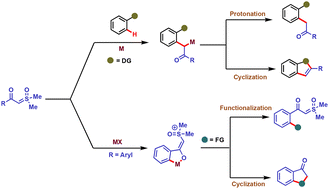
Org. Biomol. Chem., 2023,21, 879-909
https://doi.org/10.1039/D2OB01835G
Molecular field analysis for data-driven molecular design in asymmetric catalysis
This review highlights the recent advances in the use of MFA (molecular field analysis) for data-driven catalyst design, enabling to improve selectivity in asymmetric catalysis.

Org. Biomol. Chem., 2022,20, 6057-6071
https://doi.org/10.1039/D2OB00228K
Transition metal catalysed direct sulfanylation of unreactive C–H bonds: an overview of the last two decades
Transition metal catalysed C–S bond formation from unreactive C–H bonds is a remarkable tool in the late-stage functionalization of complex molecules. This review highlights significant advances and mechanistic analyses from the last two decades.
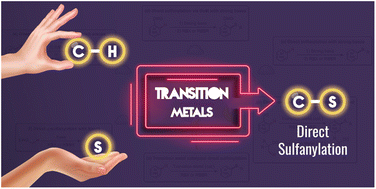
Org. Biomol. Chem., 2022,20, 6072-6177
https://doi.org/10.1039/D2OB00986B
Recent approaches for the synthesis of pyridines and (iso)quinolines using propargylic Alcohols
This review article contains various synthetic strategies for the generation of pyridines, quinolines, and isoquinolines from the propargylic alcohols during the period between 2005–2021. This is the first focused review that has appeared on this topic.

Org. Biomol. Chem., 2022,20, 6037-6056
https://doi.org/10.1039/D2OB00587E
Recent synthetic methods involving carbon radicals generated by electrochemical catalysis
The review discusses recent advances in electrocatalytic radical coupling reactions involving carbon-centered radical species.

Org. Biomol. Chem., 2022,20, 5907-5932
https://doi.org/10.1039/D2OB00424K
Enzyme directed evolution using genetically encodable biosensors
This review discusses the application of genetically-encodable biosensors toward enzyme directed evolution.

Org. Biomol. Chem., 2022,20, 5891-5906
https://doi.org/10.1039/D2OB00443G
The use of bromopyridazinedione derivatives in chemical biology
Herein we disclose the chemically unique features of the pyridazinedione scaffold and how these have been applied in various bioconjugation methodologies.

Org. Biomol. Chem., 2022,20, 5879-5890
https://doi.org/10.1039/D2OB00310D
(3 + 2) cycloaddition of 2-alkoxynaphthalenes with azaoxyallyl cations: access to benzo[e]indolones
A route to functionalized benzo[e]indolones has been reported via (3 + 2) cycloaddition of in situ generated azaoxyallyl cations with alkoxynaphthalene followed by aryl C–O bond cleavage. The intermediate adduct has been isolated and characterized.
![Graphical abstract: (3 + 2) cycloaddition of 2-alkoxynaphthalenes with azaoxyallyl cations: access to benzo[e]indolones](/en/Image/Get?imageInfo.ImageType=GA&imageInfo.ImageIdentifier.ManuscriptID=D2OB01441F&imageInfo.ImageIdentifier.Year=2022)
Org. Biomol. Chem., 2022,20, 8400-8404
https://doi.org/10.1039/D2OB01441F
Photoacid-catalyzed acetalization of carbonyls with alcohols
In this report, we demonstrate that visible light photoactivation of 6-bromo-2-naphthol facilitates the photoacid-catalyzed acetalization of carbonyls with alcohols.

Org. Biomol. Chem., 2022,20, 6188-6192
https://doi.org/10.1039/D2OB00435F
Relative rates of alkylation for B-substituted triarylphosphines: an ortho-Boron group enhances reactivity on phosphorus
A slight rate enhancement for substitution reactions on P results from electrostatic interactions with an ortho-Bpin group.

Org. Biomol. Chem., 2022,20, 6183-6187
https://doi.org/10.1039/D2OB00505K
Hydrogenation of n-octanoic acid over the MoPt alloy of Mo–Pt/SiO2 catalyst under solvent-free conditions
MoPt alloy in Mo–Pt/SiO2 catalyst was effective for the hydrogenation of n-octanoic acid to 1-octanol at a low reaction temperature of 373 K under neat reaction conditions.

Org. Biomol. Chem., 2022,20, 6196-6200
https://doi.org/10.1039/D2OB00824F
Total synthesis of (±)-mersicarpine following a 6-exo-trig radical cyclization
A concise total synthesis of racemic mersicarpine is achieved featuring an application of a 6-exo-trig radical cyclization of a 2-indolyl radical.

Org. Biomol. Chem., 2022,20, 6193-6195
https://doi.org/10.1039/D2OB00620K
H–F bond insertions into α-diazo carbonyl compounds
A new protocol for the fluorination of various α-diazo carbonyl compounds is reported employing HF·pyr (Olah reagent). The method can be performed open-flask, is metal-free, and shows a broad scope.

Org. Biomol. Chem., 2022,20, 6178-6182
https://doi.org/10.1039/D2OB00400C
Decyanation–(hetero)arylation of malononitriles to access α-(hetero)arylnitriles
In this manuscript, we report a new strategy to access α-(hetero)arylnitriles from malononitrile, a commodity chemical. The reaction proceeds through a one-pot decyanation (via transnitrilation) and subsequent nucleophilic aromatic substitution.

Org. Biomol. Chem., 2022,20, 5933-5937
https://doi.org/10.1039/D2OB00236A
Fluorogenic sydnonimine probes for orthogonal labeling
Sydnonimine fluorogenic probes with a high turn-on ratio were designed and synthesized, releasing near-infrared fluorescence via a strain-promoted “click-and-release” reaction.

Org. Biomol. Chem., 2022,20, 5953-5957
https://doi.org/10.1039/D2OB00159D
Copper-catalyzed aerobic benzylic C(sp3)–H lactonization of 2-alkylbenzamides via N-centered radicals
We developed a novel copper-catalyzed benzolactone synthesis via 1,5-HAT of amidyl radicals from 2-alkylbenzamides under O2 atmosphere.

Org. Biomol. Chem., 2022,20, 5948-5952
https://doi.org/10.1039/D2OB00281G
Total synthesis of (±)-vinoxine: construction of the bridged pyrido[1,2-a]indole skeleton via Tf2O-mediated Bischler–Napieralski reaction and stereoselective radical cyclization
The total synthesis of (±)-vinoxine was achieved featuring the assembly of a substituted tetrahydropyrido[1,2-a]indole skeleton through the Tf2O-mediated Bischler–Napieralski reaction.
![Graphical abstract: Total synthesis of (±)-vinoxine: construction of the bridged pyrido[1,2-a]indole skeleton via Tf2O-mediated Bischler–Napieralski reaction and stereoselective radical cyclization](/en/Image/Get?imageInfo.ImageType=GA&imageInfo.ImageIdentifier.ManuscriptID=D2OB00274D&imageInfo.ImageIdentifier.Year=2022)
Org. Biomol. Chem., 2022,20, 5943-5947
https://doi.org/10.1039/D2OB00274D
Visible-light-mediated oxidative C–S bond cleavage of benzyl thiols through in situ activation strategy
A visible-light-mediated oxidative C–S bond cleavage of benzyl thiols through an in situ activation strategy was developed.

Org. Biomol. Chem., 2022,20, 5938-5942
https://doi.org/10.1039/D2OB00089J
Deoxyfluorination tunes the aggregation of cellulose and chitin oligosaccharides and highlights the role of specific hydroxyl groups in the crystallization process
Using synthetic oligosaccharides, we examined how deoxyfluorination (site and pattern) impact the solubility and aggregation of cellulose and chitin oligomers.

Org. Biomol. Chem., 2022,20, 8228-8235
https://doi.org/10.1039/D2OB01601J
Self-reporting styrylthiazolium photopharmaceuticals: mitochondrial localisation as well as SAR drive biological activity
The first cellular application of cationic styrylthiazolium photopharmaceuticals highlights powerful photochemistry, and subcellular phototargeting of inhibition.

Org. Biomol. Chem., 2022,20, 7787-7794
https://doi.org/10.1039/D2OB00347C
Fluorogenic monomer activation for protein-initiated atom transfer radical polymerization
Fluorogenic ATRP from initiator-modified protein enables visual, real-time detection of polymer formation in bioorthogonal fashion by removal of monomer α,β-unsaturation.

Org. Biomol. Chem., 2022,20, 6257-6262
https://doi.org/10.1039/D2OB00175F
Peptide macrocyclisation via late-stage reductive amination
A two-component reductive amination protocol enables the macrocyclisation of unprotected peptide diamines with functionalised pyridinedialdehyde linkers.

Org. Biomol. Chem., 2022,20, 6250-6256
https://doi.org/10.1039/D2OB00782G
On-resin Cα-functionalization of N-arylglycinyl peptides with boronic acids
A late-stage α-C–H functionalization reaction of resin-bound, electron-rich N-aryl peptides with boronic acid nucleophiles under mild conditions is reported.

Org. Biomol. Chem., 2022,20, 6245-6249
https://doi.org/10.1039/D2OB00524G
A copper-catalysed one-pot hydroboration/azidation/cycloaddition reaction of alkynes
Herein we report our study on the development of a catalytic one-pot process, showing the challenges and advantages encountered all over the way.

Org. Biomol. Chem., 2022,20, 6239-6244
https://doi.org/10.1039/D2OB00635A
Development of an ATP-independent bioluminescent probe for detection of extracellular hydrogen peroxide
The synthesis and evaluation of a new ATP-independent bioluminescent probe for H2O2 detection is described and applied toward intra- and extracellular detection in a breast cancer cell model.

Org. Biomol. Chem., 2022,20, 6231-6238
https://doi.org/10.1039/D2OB00436D
Dipeptide self-assembly into water-channels and gel biomaterial
Heterochiral Phe–Val self-assembles into water-channels and forms a cell-biocompatible hydrogel biomaterial.
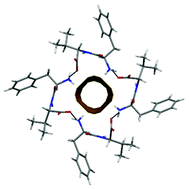
Org. Biomol. Chem., 2022,20, 6211-6218
https://doi.org/10.1039/D2OB00622G
Who stole the proton? Suspect general base guanine found with a smoking gun in the pistol ribozyme
Computational structural investigation (CSI) points to a new primary suspect as the general base in pistol ribozyme catalysis.

Org. Biomol. Chem., 2022,20, 6219-6230
https://doi.org/10.1039/D2OB00234E
Back electron transfer rates determine the photoreactivity of donor–acceptor stilbene complexes in a macrocyclic host
We investigated the photochemistry of ternary complexes of a cucurbit[8]uril host and donor–acceptor stilbene guests. We found that slow back electron transfer rates allow [2 + 2] photocycloadditions to proceed after photoinitiated charge transfer.
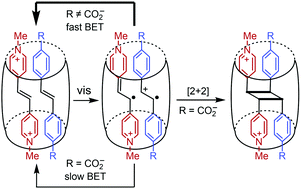
Org. Biomol. Chem., 2022,20, 6201-6210
https://doi.org/10.1039/D2OB00472K
Transamidation of thioamides with nucleophilic amines: thioamide N–C(S) activation by ground-state-destabilization
We present a general strategy for activation of N–C(S) thioamide bonds by ground-state-destabilization in the context of a full study on transamidation of thioamides with nucleophilic amines.

Org. Biomol. Chem., 2022,20, 5981-5988
https://doi.org/10.1039/D2OB00412G
Mechanistic investigation of enolate/stabilized vinylogous carbanion-mediated organocatalytic azide (3 + 2) cycloaddition reactions for the synthesis of 1,2,3-triazoles
Studies of two organocatalyzed 1,3-dipolar cycloadditions are provided, with investigation of the elementary steps, intermediates, and transition states in terms of DFT calculations, supported by 1H NMR monitoring, along with DIAS analysis.

Org. Biomol. Chem., 2022,20, 6019-6026
https://doi.org/10.1039/D2OB00391K
A predictive and mechanistic statistical modelling workflow for improving decision making in organic synthesis and catalysis
Multivariate logistic regression models can be developed and utilized as a strategy to streamline the reaction optimization process.

Org. Biomol. Chem., 2022,20, 6012-6018
https://doi.org/10.1039/D2OB00272H
Sulfonated red and far-red rhodamines to visualize SNAP- and Halo-tagged cell surface proteins
Sulfonated rhodamine dyes allow SNAP- and Halo-tag labelling of cell surface protein fusions. A far-red version can be used for STED nanoscopy.

Org. Biomol. Chem., 2022,20, 5967-5980
https://doi.org/10.1039/D1OB02216D
Modular synthesis of triazoles from 2-azidoacrylamides having a nucleophilic amino group
Assembling methods using 2-azidoacrylamides having an amino group are disclosed, and they were used to synthesize 2-azidoacrylamides having a fluorosulfonyl group. We achieved consecutive click reactions using the new trivalent platform.

Org. Biomol. Chem., 2022,20, 6007-6011
https://doi.org/10.1039/D2OB00151A
Supramolecular self-associating amphiphiles: determination of molecular self-association properties and calculation of critical micelle concentration using a high-throughput, optical density based methodology
A microplate reader assay to enable the characterisation of amphiphile self-assembly processes and derivation of the critical micelle concentration (CMC).
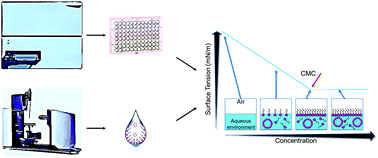
Org. Biomol. Chem., 2022,20, 5999-6006
https://doi.org/10.1039/D2OB00066K
Cross-conjugation controls the stabilities and photophysical properties of heteroazoarene photoswitches
Azoarene photoswitches are versatile molecules that interconvert from their E-isomer to their Z-isomer with light.
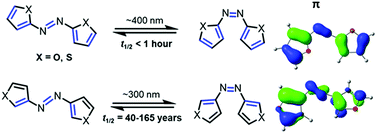
Org. Biomol. Chem., 2022,20, 5989-5998
https://doi.org/10.1039/D1OB02026A
A supramolecular host for phosphatidylglycerol (PG) lipids with antibacterial activity
Various small molecules containing boronic acid and urea functionalities are shown to bind selectively to the bacterial lipid PG (phosphatidylglycerol) and exert antibacterial activity through a membrane-related mechanism.
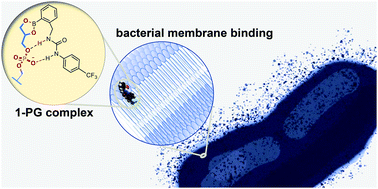
Org. Biomol. Chem., 2022,20, 5958-5966
https://doi.org/10.1039/D1OB02298A
About this collection
This New Talent issue aims to highlight the excellent work being carried out by early career members of our research community.
It will cover topics including organic synthesis, physical organic chemistry, supramolecular chemistry and chemical biology, and showcase the strength of research being carried out by tomorrow's leaders in the field.
Articles in this themed issue will be added below as soon as possible after they are published. Please return to this page frequently to see the collection grow.